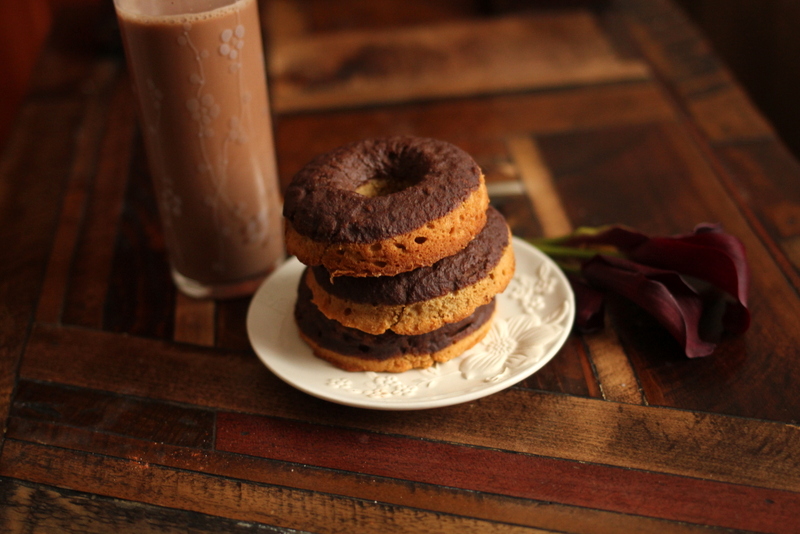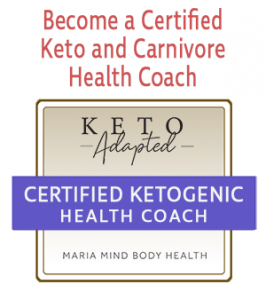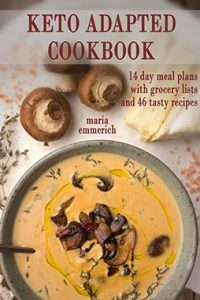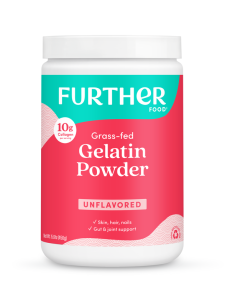“HEALTHIFIED” BACK TO SCHOOL
It is Monday morning and the whole family is running late. The bus is about to pick up the kids and they haven’t eaten anything yet. So you pour them a glass of no-sugar-added, “all-natural” grape juice and toss a Pop-Tart their way. But they made it onto the bus and no one was late, WHEW! Thank goodness for pre-packaged “food.”
No time for breakfast meant no time to pack their lunch either, so your children ate school lunch that day; chicken nuggets, mashed potatoes, a bun, fruit cocktail, and chocolate milk. After school programs and sports keep your kids at school until 4:30, so they grab a granola bar and Gatorade from their backpack to keep their energy up. Once all of the activities are over, mom is tired from driving all over the place and picking up the kids so she throws in frozen pizza with a side of garlic bread with some skim milk. Then a bowl of Lucky Charms for a bed-time snack (they are made with “Whole Grains” now). Does that sound like you?
Tuesday was a better day. Everyone had time for breakfast so the kids had Honey Nut Cheerios (10 tsp sugar), Skim milk (3 tsp sugar) and a banana sliced on top (6 tsp sugar). You packed lunch of Lunch-ables turkey and cheddar sub (14.75 tsp sugar), Goldfish crackers (4.75 tsp sugar) and a juice box (6.75 tsp sugar). The after school snack was yogurt covered raisins (5 tsp sugar) and Gatorade (3.5 tsp sugar). You had time to make dinner so you made spaghetti (10.75 tsp sugar) with a side of garlic bread (5.5 tsp sugar), salad with fat-free French dressing (2.25 tsp sugar) and skim milk (3 tsp sugar) for dinner…oh, and fat-free frozen yogurt (5 tsp sugar) for dessert! You think you did better today…but did you? That comes to a total of 80.25 teaspoons of sugar in the blood for the day (4g effective carbs equals 1 tsp of sugar in the blood). Do you know what a normal blood sugar level is? 1 cup? 2 cups? NO, 1 TEASPOON of sugar is a normal blood sugar! For adults, children, teens, and babies. Blood sugar increases insulin and insulin is TOXIC to our bodies and cells. I feel terrible for the kids diagnosed with ADD and ADHD… maybe it is just too much sugar.
Dr. Stephen Sondike, Program Director for NEW (Nutrition, Exercise and Weight Management) Kids Program at Children’s Hospital of Wisconsin, disagrees with the assertion that low-carb diets make kids sluggish. He says the opposite is true. “Kids get tired when they eat a breakfast high in carbohydrates and their blood sugar drops at around 10:00 am.” Sondike says that a breakfast consisting of a bagel and a glass of orange juice—both high-carb items—causes a temporary spike in blood sugar for a high-energy early morning, but results in a mid-morning “crash” that leaves bodies listless and craving sugar. “When you eat more sugar, your body makes less sugar, so you need more sugar,” Sondike explains. “The candy and coke makers love it when people eat high-carb breakfasts because they need that fix around 10:00 am when their sugar drops.” We need to start healing our body with food so adult diseases don’t happen. We are too accepting to put a “Band-Aid” on our issues once the problem has already happened. We need to fix the source of the problems.
Insulin and its counterbalancing hormone, glucagon, are in charge of controlling metabolism. The word insulin may immediately call up an association with diabetes, and this is totally valid. Controlling blood sugar is insulin’s most important job. Many people with heart disease, high cholesterol, diabetes, high blood pressure in their families have inherited a tendency for their insulin sensors on the cells to malfunction by years of high sugar and starch consumption. As these sensors become tired, insulin resistance develops. Since it’s essential to get the sugar out of the blood and into the cells, the pancreas overcompensates by making more and more insulin to force the tired sensors to work. This starts a detrimental cycle of needing ever more insulin to keep the process going. If we start our children on a diet of high starch, they become so resistant to insulin that the amount necessary to make the sensors respond and clear the sugar from the blood is more than their pancreas can make; they become diabetic.
Excess insulin causes a variety of other detrimental problems; it increases the production of cholesterol in the liver; thickens the walls of the arteries, causing high blood pressure; the kidneys retain salt and fluid, and it tells our fat cells to store excess starch and sugar.
Insulin’s actions are countered by glucagon. Glucagon alerts the liver to slow down triglyceride and cholesterol production, for the kidneys to release excess salt and fluid, to the artery wall to relax and lower blood pressure, and to the fat cells to release stored fat to be burned for energy. But, insulin is a stronger hormone and when it is high, it suppresses glucagon’s actions. After a childhood of sugar and starch consumption, metabolic syndrome and insulin resistance happen. This is why what we feed our children is so important.
What we eat controls the production of these hormones. In my recipes, you will be able to stimulate glucagon by keeping insulin low, which will allow the metabolism to heal and the malfunctioning sensors to regain sensitivity. Once this healing occurs, the metabolic disturbances that elevated insulin has caused will improve or disappear; cholesterol and triglycerides return to normal, blood pressure returns to normal, blood sugar stabilizes and you can achieve normal body weight. There’s no need to spend huge amounts of money on medications to put a “band-aid” over these problems. I have seen it time and time again; nutrition is key to a healthy body. You can pay the doctor or you can pay for the farmer.
Sure, it takes time planning and preparing meals, but we all make priorities with our time… When your kid’s attitude and grades improve (as well as YOU lose weight, feel great and look amazing), you will never regret the time you put into it!
Chocolate PB Dipped Donuts
Chocolate PB Dipped Donuts
Equipment
Ingredients
DONUTS:
- 1 1/4 cups allulose (or equivalent) plus 1 tsp stevia glycerite
- 1 3/4 cups peanut flour
- 1/3 cup unsweetened cocoa powder
- 1 1/2 teaspoons baking soda
- 1 1/2 teaspoons baking powder
- 1 teaspoon Redmond Real salt
- 2 large eggs
- 1 cup unsweetened macadamia nut milk
- 1/2 cup coconut oil melted (or butter)
- 2 teaspoons vanilla extract
CHOCOLATE DIP OPTION:
- 2 tablespoons coconut oil (or butter)
- 1 ounce unsweetened baking chocolate chopped
- 10 tablespoons heavy cream (or coconut cream)
- 1/4 cup allulose plus 1/2 tsp stevia glycerite
PEANUT BUTTER DIP OPTION:
- 1/2 cup cream cheese softened (or coconut cream)
- 1 cup natural peanut butter
- 1/4 cup allulose plus 1/2 tsp stevia glycerite
- 1/4 cup unsweetened macadamia nut milk
Instructions
- Preheat oven to 350 degrees F (175 degrees C). Grease mini donut pans with avocado oil spray.
- In a medium bowl, stir together the sweetener, peanut flour, cocoa, baking soda, baking powder, and salt. Add the eggs, almond milk, oil and vanilla, mix for 3 minutes with an electric mixer. Pour evenly into the two prepared pans.
- Bake for 12-15 minutes in the preheated oven, until a toothpick inserted comes out clean. Cool for 10 minutes before removing from pans to cool completely.
CHOCOLATE DIP:
- Place the butter and chopped chocolate in a double boiler (or in a heat-safe dish over a pot of boiling water). Stir well until just melted (don’t burn the chocolate!), add in the cream, and sweetener. Stir until smooth and thick. Use chocolate to dip the donuts.
PEANUT BUTTER DIP:
- In a mixing bowl, combine all the ingredients; mix well. Place in a cute dish to serve with the donuts.
Notes
Nutrition


















Hi, I really appreciate all of your fabulous recipes. Can you explain how the donuts are chocolate if there’s not listed in the ingredients? Am I missing something?
Sorry, fixed it above. 🙂
Is there a different flour you can use than peanut flour? I have a sensitivity to peanuts.
You can try almond flour. 🙂
Is the peanut butter dip included in the carb count?
Yes. 🙂
Sorry for another question but my chocolate dip was not thick. I added the 10 tbls cream was that correct? Should I have stopped when it became thinner?
Hmm, not sure what happened. You can try adding less next time (or add a little more oil and baking chocolate now). 🙂
How much cocoa powder in the doughnuts? Not seeing an amount in the ingredients list.
Oops, don’t know how that got lost. I updated it above. Thanks! 🙂